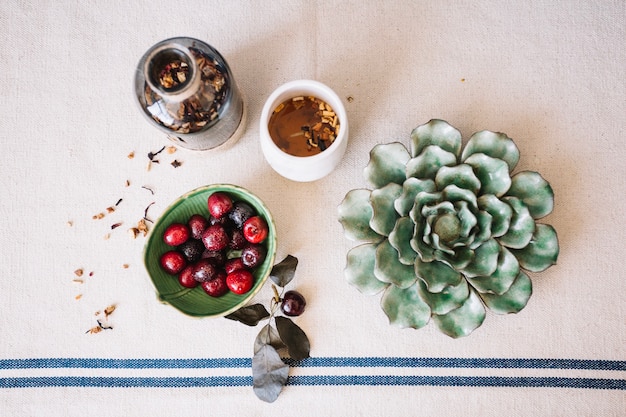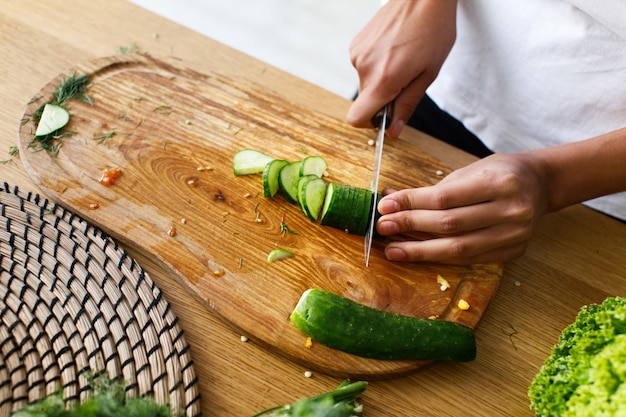Let's face it, cacti - those spiky, desert-dwelling plants - aren't the first thing that comes to mind when you think of dinner. But hold on! There's a whole world of culinary delights waiting to be discovered in these unusual botanical wonders. My own journey into cactus cooking started in Mexico, where I encountered these massive, prickly things everywhere. A local friend revealed their edible nature, explaining how they were a staple in Mexican cuisine. He even gave me a crash course in preparing them – a surprisingly simple process! Ever since, I've been hooked, experimenting with different cactus varieties and recipes, and I've been constantly amazed by the diverse flavours and textures they offer.
If you're looking for a unique culinary adventure, then you've come to the right place. In this article, we'll be diving deep into the fascinating world of cactus cooking. We'll talk about the different types of cacti that are edible, how to safely prepare them, and I'll share some of my favourite recipes that will transform your perception of these prickly plants.
(Part 1) The Prickly Truth: Choosing the Right Cactus

First things first, let's discuss the different kinds of cacti you can use for cooking. Not all cacti are created equal. Some are delicious, while others are best left alone (or perhaps used for something other than eating!).
Prickly Pear (Opuntia ficus-indica)
This is probably the most famous edible cactus. It has those striking, flat, paddle-shaped pads (called "nopales") and those gorgeous, juicy red fruits (prickly pears, of course!). The nopales offer a taste reminiscent of a green bean crossed with a slightly bitter artichoke. They're fantastic grilled, sautéed, or even fried. As for the fruits, they're refreshingly sweet and make fantastic jams or juices.
Cholla Cactus (Cylindropuntia)
Cholla cactus might seem a bit more daunting than the prickly pear. It's got those long, cylindrical stems covered in sharp, needle-like spines. But don't let those spines scare you off! The stems are actually quite delicious, boasting a slightly earthy flavour. They're generally eaten cooked, often in stews or soups.
Barrel Cactus (Ferocactus)
The barrel cactus is truly a showstopper, a massive, spherical cactus with a thick, fleshy interior. The pulp inside has a sweet, slightly tangy flavour. It's often used to make jams, jellies, and even candies. But be very careful – the barrel cactus is also covered in extremely sharp spines, so handling it requires utmost caution.
Saguaro Cactus (Carnegiea gigantea)
The saguaro is a majestic giant of the desert, reaching heights of over 40 feet! And yes, it's edible too. The fruits are sweet and juicy, making a delicious juice or jam. The flesh can also be eaten, although it's quite fibrous.
Dragon Fruit (Hylocereus undatus)
Technically, this isn't a true cactus but belongs to the same family. Dragon fruit is a fast-growing vine that produces those incredible, colourful fruits. They're sweet and juicy, with a flavour resembling a mix of kiwi and pear. You can eat them fresh, or add them to smoothies, salads, or even desserts.
So, there you have it - a wide range of delicious cacti to explore! Just remember to ensure the cacti you choose are edible and that you know how to prepare them safely. If you're ever unsure, it's always best to consult with an expert or a reliable resource.
(Part 2) Demystifying the Spines: Preparing Cactus for Cooking

Now that you've chosen your cactus, it's time to tackle those pesky spines. I know, I know, it seems like a daunting task, but I promise it's not as bad as it looks.
Getting Rid of the Spines
Most cacti have these tiny, almost invisible, "glochids" – barbed hairs that can be incredibly irritating. The first step is to get rid of these. You can do this by gently scraping the surface of the cactus with a sharp knife or a vegetable peeler. Just be careful not to cut yourself!
For the larger spines, you can use a pair of tongs or even pliers. Grab the spine firmly and pull it out. You can also try burning the spines off with a flame – just be extremely cautious not to burn the cactus itself.
Cleaning and Prepping
After dealing with the spines, give your cactus a good clean. Wash it under running water, ensuring you remove any remaining glochids. Then, depending on the type of cactus you're using, you may need to peel it or remove the skin.
For instance, with prickly pear nopales, you'll need to remove the outer skin. You can do this by scraping it off with a knife or using a vegetable peeler. With cholla cactus, you need to peel the outer layer of the stem.
Preparing the Cactus
Once you've cleaned and prepped your cactus, you can begin preparing it for cooking. Depending on your chosen recipe, you may need to chop, slice, or dice it. You can also cook it whole, as in some cholla recipes.
Here are some general tips for preparing cactus:
- For nopales, simmering them in boiling water for a few minutes can help remove some of the bitterness.
- Cholla cactus is typically cooked in stews or soups, but grilling or frying it is also an option.
- The flesh of barrel cactus needs to be cooked before consuming it.
- Dragon fruit can be eaten fresh or incorporated into smoothies, salads, and desserts.
Remember, the most crucial thing is to prepare the cactus carefully and follow the instructions in your chosen recipe.
(Part 3) Cactus in the Kitchen: Recipes to Get You Started

Now, onto the fun part – the recipes! I've compiled some of my favourite cactus recipes to get you started on your culinary journey.
Grilled Nopales with Chipotle Salsa
This is a classic Mexican dish that's both delicious and incredibly easy to make. You simply grill the nopales until they're tender and slightly charred. Then, top them with a spicy chipotle salsa. The smoky flavour of the chipotle salsa complements the slightly bitter nopales perfectly.
Ingredients:
- 1 pound nopales, cleaned and thinly sliced
- 1/2 cup chipotle salsa
- Salt and pepper to taste
Instructions:
- Preheat your grill to medium heat.
- Brush the nopales with olive oil and season with salt and pepper.
- Grill the nopales for 3-5 minutes per side, or until they're tender and slightly charred.
- Serve immediately, topped with the chipotle salsa.
Cholla Cactus Stew
This is a hearty and comforting stew that's perfect for a chilly winter evening. The cholla cactus adds a unique, slightly earthy flavour to the stew.
Ingredients:
- 1 pound cholla cactus, cleaned and chopped
- 1 onion, chopped
- 2 cloves garlic, minced
- 1 (14.5 ounce) can diced tomatoes
- 1 (15 ounce) can black beans, rinsed and drained
- 1 (10 ounce) can chicken broth
- 1 teaspoon chili powder
- 1/2 teaspoon cumin
- Salt and pepper to taste
Instructions:
- In a large pot or dutch oven, sauté the onion and garlic in olive oil until softened.
- Add the cholla cactus, tomatoes, black beans, chicken broth, chili powder, and cumin.
- Bring to a boil, then reduce heat and simmer for 30 minutes, or until the cactus is tender.
- Season with salt and pepper to taste.
- Serve hot with a dollop of sour cream or a sprinkle of cheese.
Prickly Pear Jam
This is a sweet and tangy jam that's perfect for spreading on toast or serving with cheese and crackers.
Ingredients:
- 1 pound prickly pears, cleaned and pitted
- 1 cup sugar
- 1/4 cup lemon juice
Instructions:
- In a large saucepan, combine the prickly pears, sugar, and lemon juice.
- Bring to a boil over medium heat, then reduce heat and simmer for 30 minutes, or until the jam has thickened.
- Pour the hot jam into sterilized jars and seal tightly.
- Let the jam cool completely before storing in a cool, dark place.
Dragon Fruit Smoothie
This is a refreshing and healthy smoothie that's perfect for a scorching summer day. The dragon fruit adds a beautiful pink colour and a slightly sweet and tangy flavour.
Ingredients:
- 1 dragon fruit, peeled and chopped
- 1 cup frozen mango chunks
- 1/2 cup pineapple chunks
- 1/2 cup coconut milk
- 1/4 cup water
- 1 tablespoon honey (optional)
Instructions:
- Combine all ingredients in a blender and blend until smooth.
- Pour into glasses and serve immediately.
These are just a few ideas to ignite your creativity. With a little imagination, you can come up with endless possibilities for delicious cactus dishes.
(Part 4) Beyond the Recipes: Tips for Success in Cactus Cooking
Now that we've covered the basics, let's talk about some extra tips that can help you make the most of your cactus cooking adventures.
Think Outside the Box
Don't be afraid to get creative! Cactus is a versatile ingredient that can be used in countless ways. Try incorporating it into salads, stir-fries, pastas, and even desserts. You can also add it to soups, stews, and sauces. The possibilities are truly endless!
Cook It Right
Cactus can be tough, so it's essential to cook it properly. If you're using nopales, simmering them in boiling water for a few minutes can help remove some of the bitterness. You can also grill, sauté, or fry them. Cholla cactus is typically cooked in stews or soups, but grilling or frying is also an option.
Be Mindful of Texture
Cactus has a unique texture that can be either delightful or off-putting, depending on your taste buds. Some people adore the slightly crunchy texture of nopales, while others find it too chewy. You can soften the texture of cactus by cooking it for a longer period or by blending it into soups, sauces, or smoothies.
Experiment with Flavors
Cactus has a slightly bitter flavour, but it can be beautifully enhanced by a wide array of other flavours. Try pairing it with spicy salsas, citrusy dressings, or creamy sauces. You can also use cactus in sweet dishes, like jams, jellies, or candies.
Don't Be Afraid to Ask for Help
If you're ever unsure about anything, don't hesitate to ask for help! There are numerous resources available online and in your local community. You can also talk to a chef, a nutritionist, or a gardener.
(Part 5) The Benefits of Cactus: More Than Just Delicious
Beyond its deliciousness, cactus offers a plethora of health benefits. They're packed with nutrients and antioxidants, and they can help with everything from digestion to weight loss.
Cacti are rich in vitamins, minerals, and antioxidants. They're an excellent source of vitamin C, vitamin K, calcium, potassium, and magnesium. They also contain fibre, which aids digestion.
Supports Digestion
The high fibre content of cacti can help regulate digestion and prevent constipation. The fibre also helps to slow down the absorption of sugar into the bloodstream, which can help to stabilize blood sugar levels.
Boosts Immunity
Cacti are packed with antioxidants, which can help to protect the body from damage caused by free radicals. Antioxidants can help to boost the immune system and protect against chronic diseases.
Supports Weight Management
The fibre in cacti can help you feel full and satisfied, which can aid in weight management. Cacti are also low in calories and fat, making them a healthy choice for those looking to lose or maintain weight.
A Sustainable Choice
Cacti are a sustainable food source. They're drought-tolerant and require minimal water to grow, making them a great option for arid regions. They can also help to prevent soil erosion and provide habitat for wildlife.
(Part 6) Cactus Cuisine Around the World
Cactus has been a part of human diets for centuries, and it's enjoyed in many cultures around the world. Here are a few examples of how cactus is used in different cuisines:
Mexico
In Mexico, cactus (nopales) is a staple ingredient in numerous traditional dishes. It's often grilled, sautéed, or fried and served with salsas, beans, and rice. You can also find nopales in soups, stews, and salads.
Italy
In Italy, prickly pear (fichi d'India) is used to make jams, jellies, and liqueurs. The fruits are also enjoyed fresh or added to salads and desserts.
North Africa
In North Africa, prickly pear is a popular fruit that's eaten fresh, made into juices, or used in desserts. The stems of certain types of cacti are also used in salads and stews.
Australia
In Australia, some Aboriginal communities have traditionally used cactus (Opuntia species) as a food source. The pads are cooked and eaten, and the fruits are used to make jams and jellies.
(Part 7) Cactus Cultivation: Growing Your Own Prickly Delights
If you're feeling adventurous, you might be wondering if you can grow your own cacti. Good news! Many cacti are relatively easy to grow, even in colder climates. Here's a quick guide to get you started:
Choosing the Right Cactus
Not all cacti are created equal. Some are more suitable for growing indoors, while others thrive outdoors in warmer climates. Research the specific cactus varieties you're interested in and choose those that are well-suited to your growing conditions.
Providing the Right Conditions
Cacti need plenty of sunlight and well-drained soil. They're also very drought-tolerant and don't need a lot of water. Overwatering can actually be fatal to cacti.
Protecting Yourself from Spines
Remember those spines? They're a real pain (literally!), so it's essential to take precautions when handling cacti. Wear gloves, long sleeves, and protective eyewear. And always handle cacti with care, using tongs or pliers to remove spines.
Patience is Key
Cacti can take a long time to grow, so be patient. Don't get discouraged if you don't see immediate results. Just keep providing the right conditions, and your cacti will eventually thrive.
(Part 8) FAQs: Your Cactus Cooking Questions Answered
Here are some frequently asked questions about cactus cooking:
1. Is all cactus edible?
No, not all cacti are edible. Some cacti contain toxins that can be harmful if ingested. Only consume cacti that are known to be edible, and always consult a reputable source before trying a new type of cactus.
2. How do I know if a cactus is safe to eat?
A good way to determine if a cactus is edible is to research it online or consult with a local expert. You can also look for signs of previous consumption by animals. If you see animals eating a certain type of cactus, it's likely safe for human consumption.
3. Where can I find edible cactus?
Edible cacti can be found at specialty markets, farmers' markets, and some grocery stores. You can also try growing your own cacti at home.
4. How do I remove the spines from a cactus?
The best way to remove spines from a cactus is to use a pair of tongs or pliers. You can also try burning the spines off with a flame. Just be careful not to burn the cactus itself.
5. What are some good ways to cook cactus?
Cactus can be cooked in many different ways. It can be grilled, sautéed, fried, stewed, or added to soups, salads, and desserts. Experiment with different recipes and find what you like best.
Remember, cactus is a versatile and delicious ingredient that can add a unique twist to your cooking. So, get out there, explore, and enjoy the prickly world of cactus cuisine!
Everyone is watching

Prime Rib Roast Cooking Time Chart: Per Pound Guide
Cooking TipsPrime rib roast. Just the name conjures images of lavish dinners, crackling fires, and hearty laughter. It’s ...

How Long to Bake Potatoes in the Oven (Perfect Every Time)
Cooking TipsBaked potatoes are a staple in my kitchen. They're incredibly versatile, delicious, and surprisingly easy to m...

Perfect Rice Every Time: The Ultimate Guide to Cooking Rice
Cooking TipsAs a self-proclaimed foodie, I've always been a bit obsessed with rice. It's the foundation of countless cuisi...

The Ultimate Guide to Cooking Asparagus: Tips, Techniques, and Recipes
Cooking TipsAsparagus. The mere mention of this spring delicacy conjures up images of vibrant green spears, crisp and burs...

Ultimate Guide to Cooking the Perfect Thanksgiving Turkey
Cooking TipsThanksgiving. Just the word conjures up images of overflowing tables laden with delicious food, the scent of r...
